History of Agra
Agra has an ancient past. Coins, sculptures and figures found in the vicinity demonstrate this. Batesar or Surjapur locality in the region connects to a king Surasena, said to be the great nephew of King Rama. In Mahabharata it finds mention as Agrabana.
Agra has a rich history. There is mention of construction of Badalgarh Fort by Badal Singh in 1475. Agra was the residence of Sikandar Lodi who made it his capital in 1505. His son Ibrahim Lodi succeeded him, but he was defeated by Babur in 1526, who went on to consolidate Mughal rule from Agra. Babur’s son Humayun was crowned king at Agra after Babur’s death in 1530. However, his empire was claimed by Sher Shah Suri who ruled for five years, after which his son Salim Shah took control. Meanwhile, Humayun returned to reclaim Agra in 1555.
Akbar his son, later took control and brought in the much needed stability to the region. He renamed the city as Akbarabad. The modern city was built on the right banks of River Yamuna, while the capital that Sikandar Lodi had built was on the left bank of the river. Agra remained the capital during Akbar, his son Jahangir and Shah Jahan. However, Shah Jahan shifted his capital back to Delhi, and its importance as a political centre slowly declined.
After the decline of Mughal Empire it went into the hands of several rulers- Jats, Marathas etc… In 1803 it went into the hands of British colonial power, and until India got Independence, it was administrated by them.
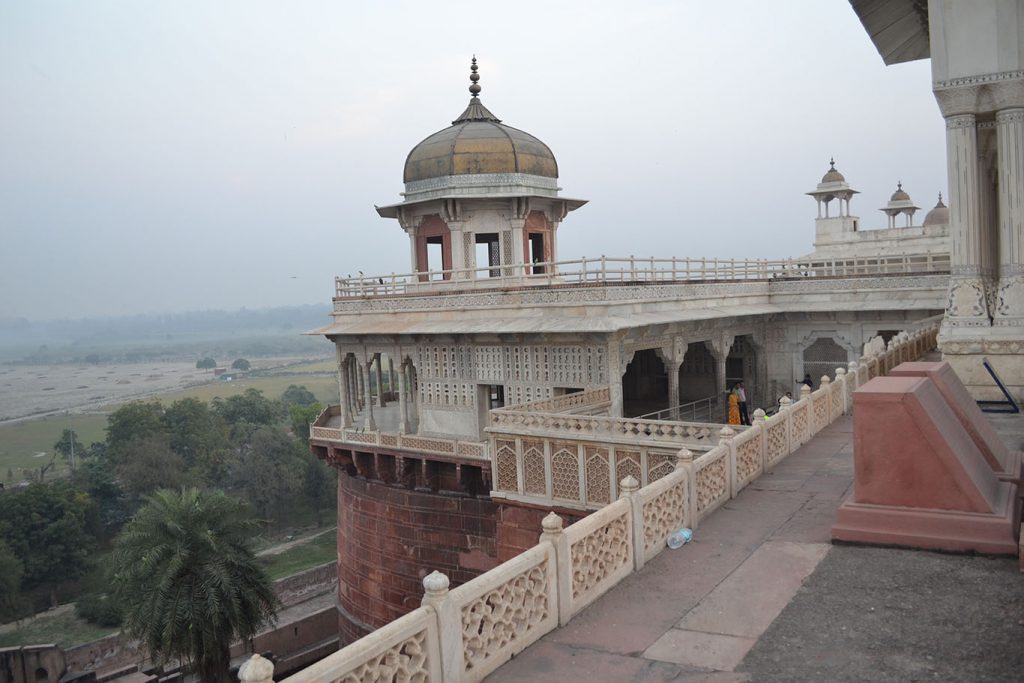
Agra’s attractions
My first visit in Agra was not the iconic Taj Mahal, rather the Taj Nature Walk. Located near the East Gate of Taj Mahal, this is a forest area of 70 hectares. The beauty of this forested area is not the zig zag winding paths, the lush green mounds or the flora and fauna, rather, it is the stone benches provided at crucial points that offer unhindered view of the Taj. The plus point – no crowd, and you can view the Taj from various angles.
The bazaars of Agra
Leather goods, carpets, handcrafted boxes, books and bags, incense sticks from mild sandalwood to heavily scented jasmine – this is a glimpse of a bazaar walk in Agra. Not to forget – Agra is famous for its sweet Petha, Gazak, and salty snacks called Dalmoth. Some shops are exclusive to Agra. The marble inlay work that they do here is rather unique, and so are their embroidery works. Some of the bazaars worth checking out are Sadar Bazaar, Gokulpura and Tajganj.
The Taj
Just on the banks of River Yamuna, this white marble monument built by Shah Jahan for his beautiful wife Arjumand Bano Begum or Mumtaz Mahal, is a heritage monument. Mumtaz Mahal died in 1631 while giving birth to her 14th child.
Started in 1631, it costed about four crore, and took nearly 17 years to construct. The white marble was brought from Makrana, Rajasthan. Inlaid with precious stones – Lapis lazuli, Cornelian, Jasper, Coral ,in varied geometric and floral patterns, the tomb with its four minarets is a beautiful tribute of love.
Just not Taj, there are other structures too in the Taj complex. A mosque and a Mehmaan Khana(guest house) are placed on either side of the Taj. Both these red sandstone structures enhance the beauty of the white marble mausoleum of Mumtaz. Both the structures are similar. However, the Mehmaan Khana, unlike the mosque, does not have a mihrab and Quranic inscriptions. Its interiors have detailed carvings in red and white.
There are also two pavilions on east and west of Taj complex. They are known as Jal Mahal, as they are on two ends of east-west water canal. Standing on raised platform four feet high – they are majestic with a white cupola topping the red sandstone structure.
There is a small Taj museum that gives details about the building of Taj, the precious stones used, the calligraphy, the swords, daggers used by the Mughal emperors, and so on.
Don’t forget to see the Taj at night if you visit during the Full Moon period.
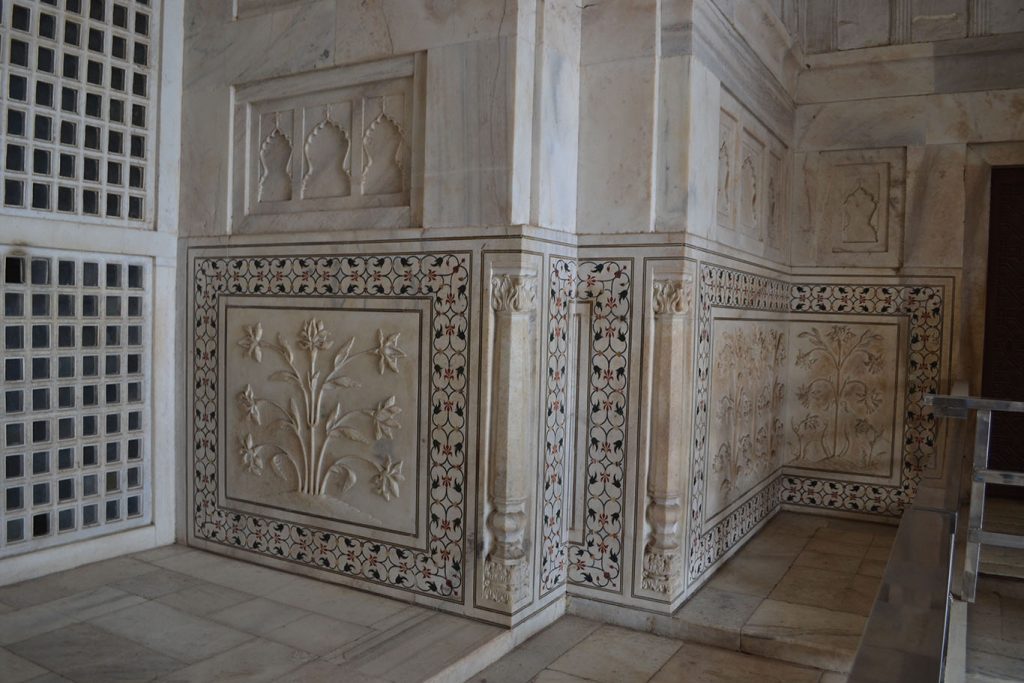
The Agra Fort
This is a citadel built by Akbar on an earlier site, Badalgarh; successive rulers after Akbar have modified, repaired and added on to the fort structures. Built in red sandstone in 1565, it took eight years for the fort to complete with the help of 4,000 workers. Some of the original structures were destroyed by Shah Jahan to replace them with his white marble buildings. The fort is impressive with its 21.4 m high fortification walls, bastions and gateways.
Inside the Agra Fort there are varied structures like the Jahangir Palace, Khaas Mahal, audience halls like Diwan-i-Aam, Sheesh Mahal, Nagina Masjid, etc. It served Akbar, Jahangir and Shah Jahan too. After Shah Jahan’s death, Aurangzeb was busy with regional conflicts. In 1666 however, there is a mention of him meeting Shivaji at the Diwan-i-Khas. After Aurangzeb’s death it was taken over by varied rulers – finally the British got control of it in 1803. Agra became a civil establishment headquarters and later the British established the Agra Presidency in 1835. After the 1857 mutiny the provisional government shifted to Allahabad. Agra was under the control of English until India’s Independence.
Some interesting structures inside the fort are the Sheesh Mahal of 1631 by Shah Jahan, the Shah Burj- the palace where Shah Jahan was imprisoned and he spent his last days till 1666, and a 16.5m gate brought from tomb at Ghazni by the British, and touted as part of Somnath Temple. You can happily loiter inside for half-a day looking at the palaces, glass works on ceilings and walls, inlay work of the white marble not to mention the ancient Mughal water supply systems inside the complex.
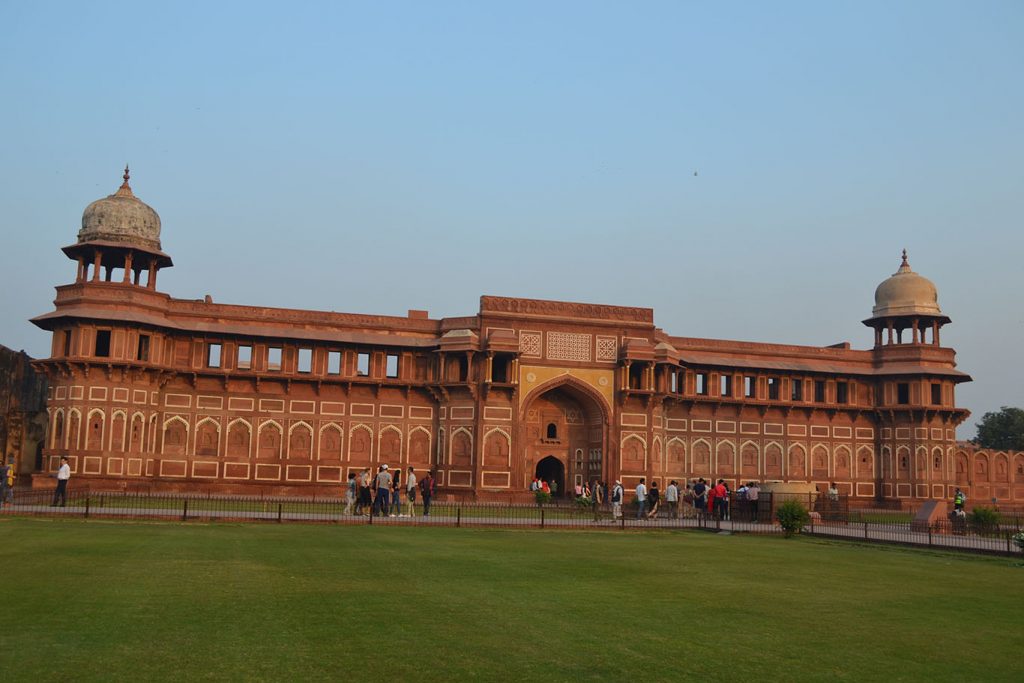
Other attractions
Other monuments on the other side of Yamuna are the Baby Taj Mahal or Itimad-ud-dalah that Nurjahan the queen of Jahangir built in 1622, in memory of her father Mirza Ghias Beg. It is a replica of Taj much smaller in scale made of white marble and inlaid with semi-precious stones.
Rambagh is an early Mughal garden of Babar. When Babar died in Agra he was temporarily buried here before shifting to Kabul. Chini Ka Roza- a mausoleum of Shah Jahan’s Prime Minister, Mehtab Bagh – a garden complex, and Sikandra – the tomb of Akbar are other attractions.
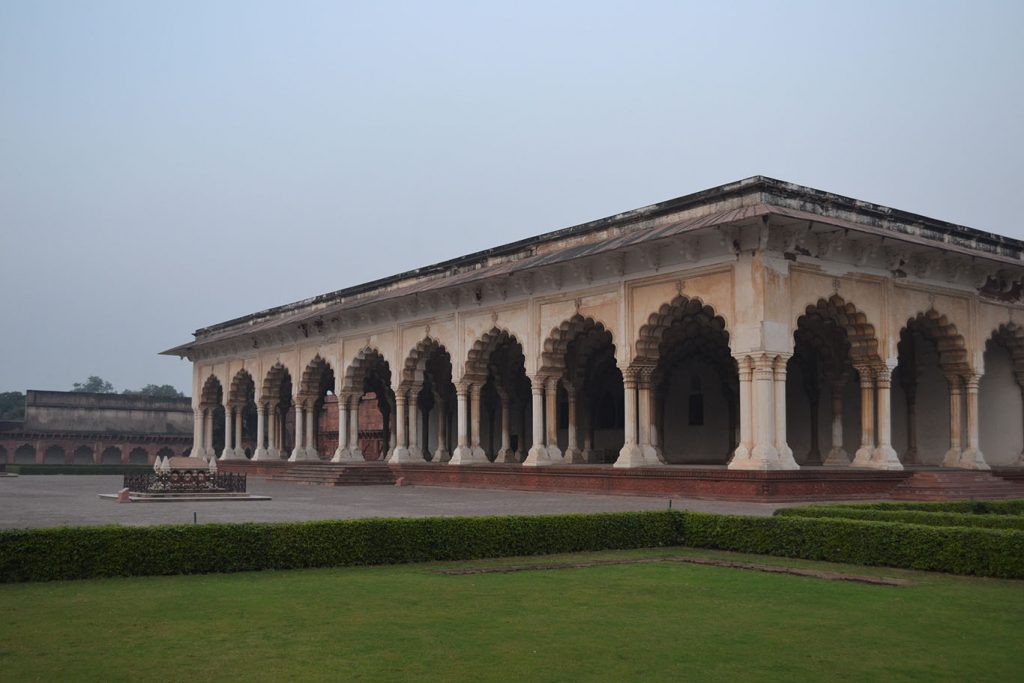
The city of Fatehpur Sikri
Fatehpur Sikri is half a day trip from Agra. Tourists throng to see Agra attractions mainly the Taj Mahal and the Agra Fort, and if they have a half a day, head towards Fatehpur Sikri. However, the city deserves a lot of attention perhaps more than Agra. It was not just Akbar’s capital, but a royal centre full of palaces, offices, tanks, and not to mention the tomb of Salim Chisti – a Sufi preacher. Poets, singers, writers graced this place – Birbal, Tansen, Todar Mahal, Abul Fazl, to name a few.
Akbar began to build this city in 1571. But what was Sikri before the advent of Mughals? Perhaps the name Sikri is derived from the word Saik that meant a region surrounded by water. A Jain inscription of 1010 names the place as Sekriya. Before the Mughals arrived it was under the control of Sikarwar Rajputs, and later the Delhi Sultanate. Babar named this place as Shukri, which means ‘thanks’. On his way to battle with Rana Sangram Singh of Mewar he had visited Sikri ,and after his victory he revisited the place and named the place as Shukri. He constructed a garden, a lake palace and a step-well. None of them however remain at Sikri.
It was Akbar who renamed the city as Fatehpur Sikri. Akbar was a devotee of Sufi saint Khwaja Sheikh Muinuddin Chisti, and often used to visit Ajmer. Akbar was childless and was saddened that he did not have an heir to rule his empire. In 1568 he heard of a Sufi saint at Sikri known as Sheikh Salim and decided to visit him. The saint assured him that he would beget three sons and this turned out to be true. His first son was born in 1569 and was named as Salim. His second son was born in 1570 and another in 1572. Convinced of the saint’s powers, he started building a city in 1571. The city was renamed as Fatehpur – city of victory when Akbar conquered Gujarat, building a commemorative gateway known as Buland Darwaza in the city.
Akbar lived in Fatehpur Sikri for 14 years and in 1585 left the city. In the 17th century, the city lost its prominence when Shah Jahan shifted the capital from Agra to Delhi. Later under the English it turned into a cantonment town. Today it is a spiritual centre filled with devotees who visit the Dargah of Sheikh Salim Chisti. And being near to Agra it has also gained prominence as a tourist centre. It has also been declared as a world heritage site in 1986.
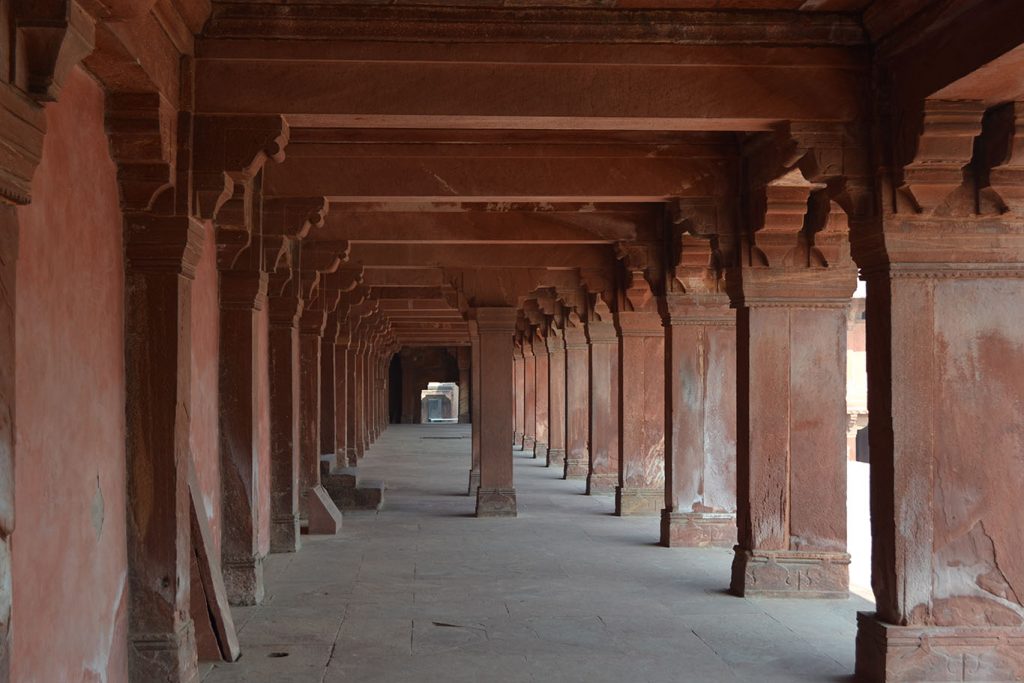
The drive to Fatehpur Sikri
The one hour drive from Agra to Fatehpur Sikri is pleasant. The yellow mustard fields, Kos Minars – the stone milestones from Mughal times – are some common things that you will encounter. As you enter the town you are greeted by shops selling Nan Khatai – the flavoured biscuits popular in the town. Passing the Agra gateway at the entrance you see a road winding upwards to the royal centre. All around you will see the remnants of a medieval city with its red sandstone walls, gateways and bazaars. The fort boasts of nine gateways. The city is surrounded by fort walls on three sides and on the fourth is bounded by a lake.
As you enter inside, you first sight the Diwan-i-Aam the public courtyard, then the royal palaces of king and queens and going further the main mosque of city Jama Masjid and the mausoleum of Sheikh Salim Chisti. The city was built on a ridge. Palaces, institutions, mosque, were on top while the bottom of the ridge saw bazaars, houses for the common people and factories. Step wells with perineal water sources provided adequate drinking water.
For such a planned city Akbar did not stay here much. In 1585 he went on a military campaign to Punjab and shifted to Agra. His visits to Fatehpur Sikri became less frequent. One of the reasons – the city was not a strong citadel. The walls are low and do not boast of defensive structures like bastions. During Akbar’s time he had to deal with lot of external and internal revolts. So he may have thought it prudent to retire to Agra fort.
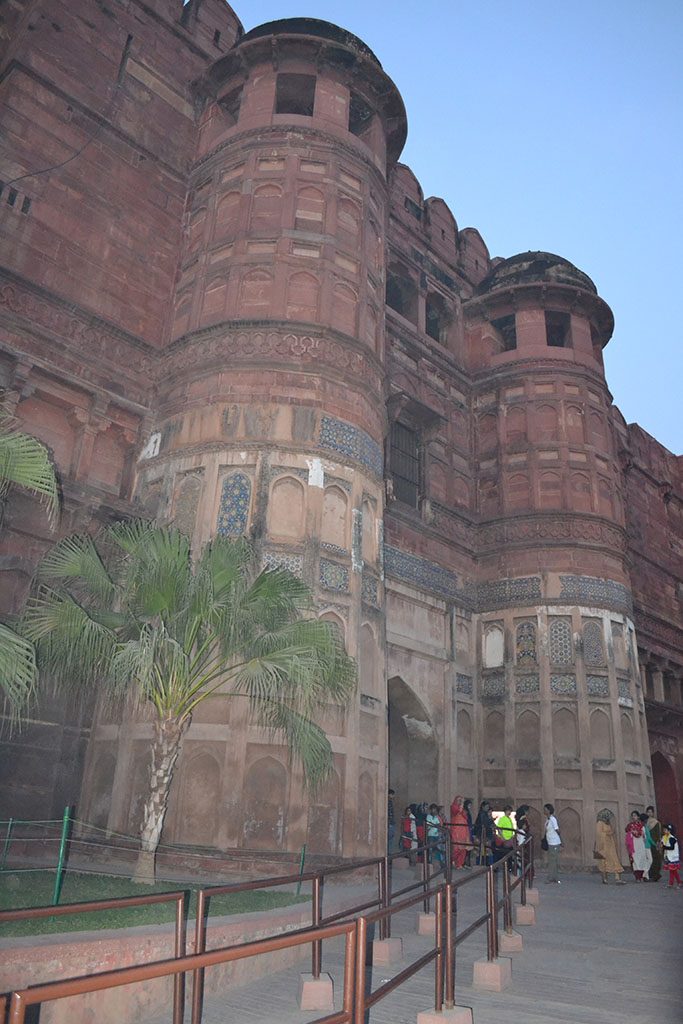
The attractions of Fatehpur Sikri
The city can be divided into the mosque complex and the imperial complex. The mosque complex boasted of the Jama Masjid, tomb of Salim Chisti and Buland-Darwaza. The imperial complex consisted of the King’s palace, harem, store house, treasury etc. Some of the structures that you can see here are:
Diwan-i-Aam: This was a public hall meant for audiences with the king. It is an extensive courtyard flat roofed. At the centre the king was seated and on either side, his ministers. It was here that the king listened to his subjects, and met out his judgements.
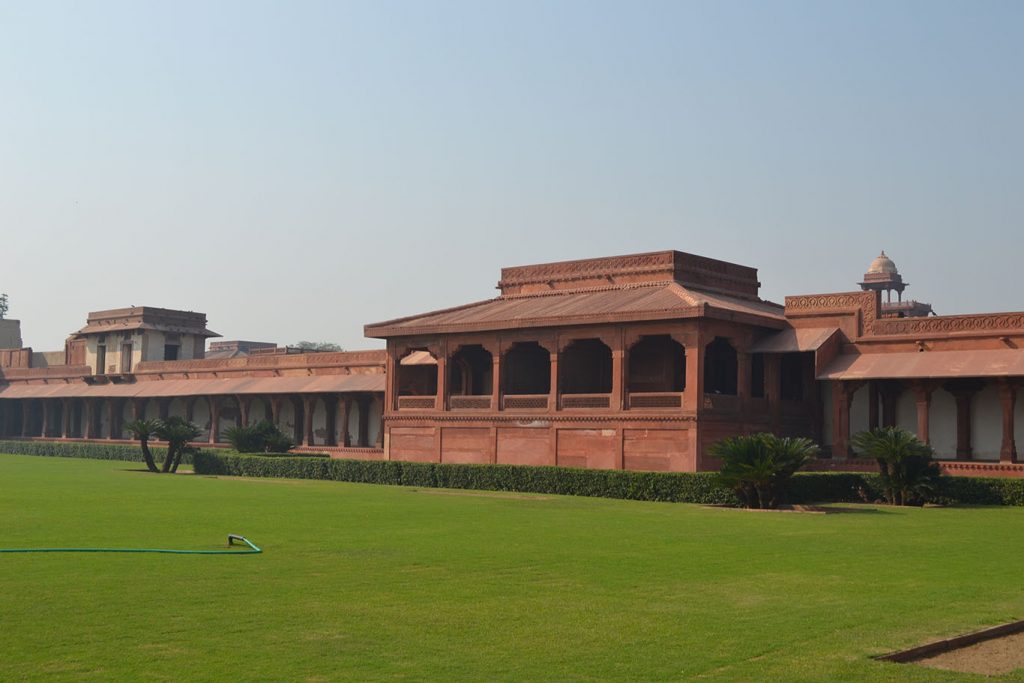
Diwan-i-Khas: This is a square palace and Akbar used it for private audiences with foreign envoys, officials, and important visitors. At the centre of the hall is a stone pillar with a round seat on top. The base is square, then becomes octagonal higher up, and divides into 16 sides. It then further opens up as a flower with serpentine brackets to support a circular platform. The functionality of this structure is not known.
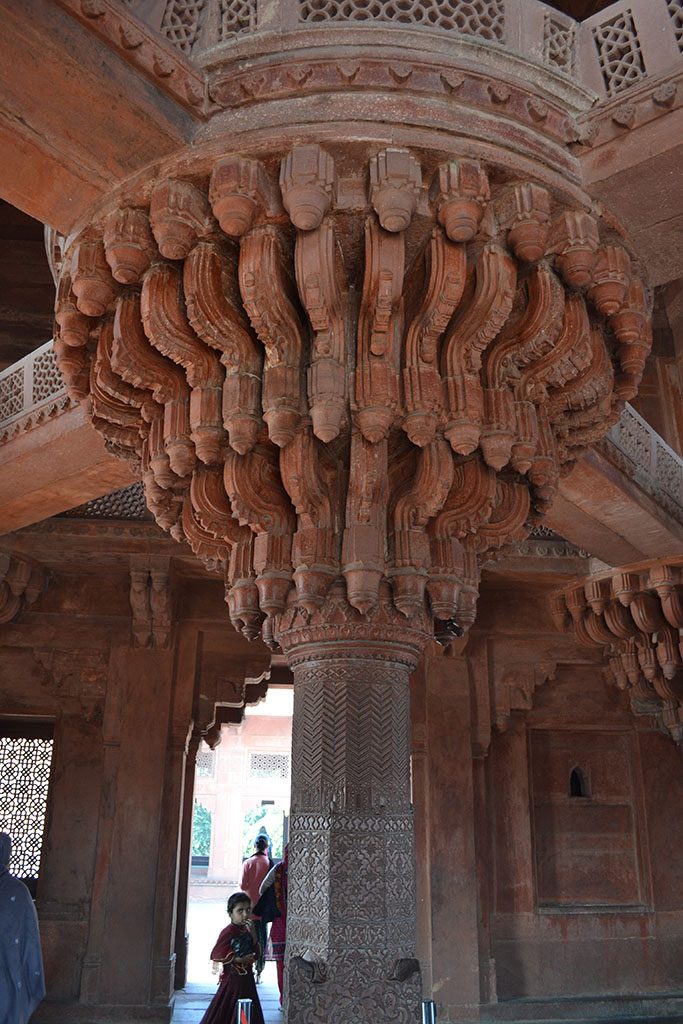
Aankh Michauli: This structure known as blind man’s buff is touted as the place where Akbar used to play this game with queens. However, it is more of a treasury used to hold gold and silver coins. There is also a structure in the south-west of this structure known as astrologer’s seat. This has torana arches similar to temples of Gujarat. And was mostly the seat of court treasurer who used to supervise works.
Panch Mahal: This is a five-storied structure open on all sides. It was said to be used by the king and his queens to enjoy the breeze and the panoramic view of the city. Below in the open courtyard there are patterns resembling a Pachisi – an Indian board game. It is said that the king used to play on this using people as living pieces.
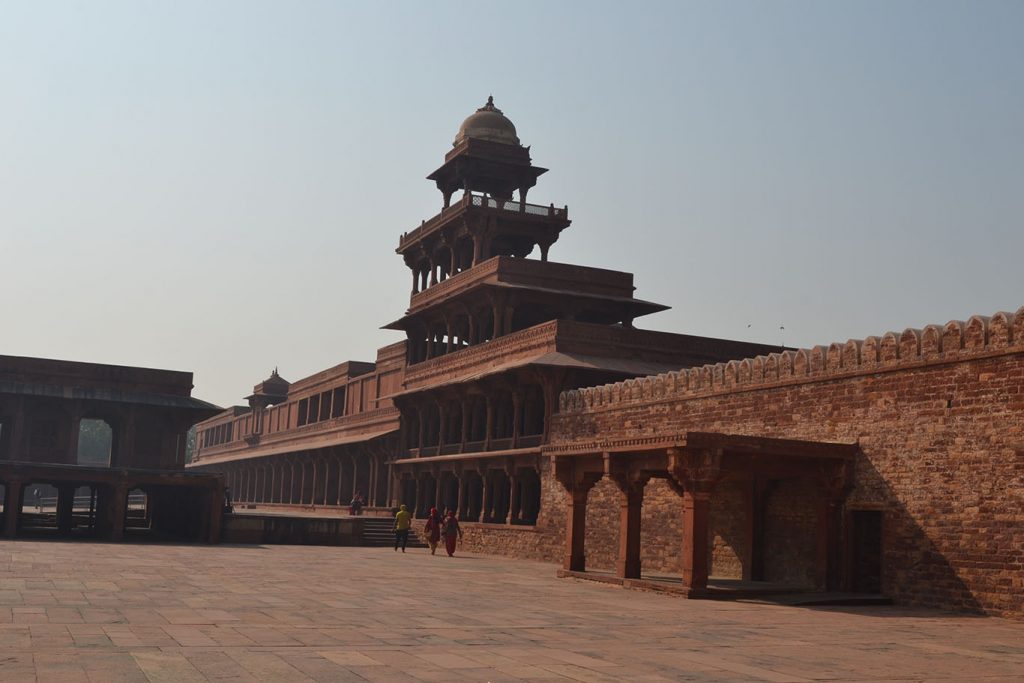
Anup Talao and Turkish Palace: Anup Talao is a red sandstone tank located centrally. It was once filled with gold, copper and silver coins, and sometimes silver and copper coins were donated to charity. Near the Talao is Khwabgah that was Akbar’s room. It still has faded mural paintings on walls. This structure connects to Haramasara – the royal harem. It also has a window to the south called Jharokha. This is where the king used to show himself to people.
Towards the north-east of the Talao is Turkish Sultana’s Palace. It is a square building with richly carved brackets and columns. The walls, ceilings have floral and geometric patterns.
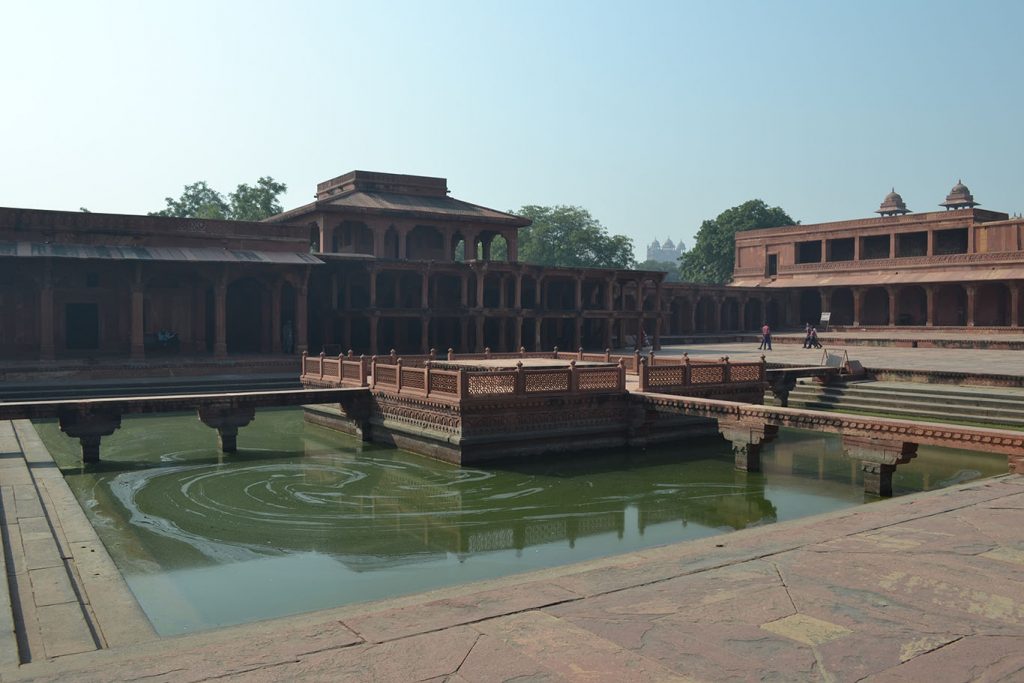
Haramsara: This was the harem of Akbar and was said to be administered by Akbar’s mother Hamid Bano Begum. The harem was heavily guarded by Rajput guards, eunuchs, and women. Akbar’s chief wives had their own quarters. The Sunhara Makan was probably meant for Akbar’s mother and it lies close to Akbar’s space. The Birbal palace was perhaps used by his queens. There is also a Hindu styled palace known as Jodha Bai palace. It is quite a large palace with a bath, garden and kitchen of its own. The palace has a Hindu shrine and motifs like lotus and vines. There are niches to keep idols. There is also a tulsi plant in the courtyard.
Jama Masjid and Dargah: This is the main mosque of the city. Next to it is the mausoleum of Chisti. The mausoleum is made of white marble. Inside the cenotaph is covered with silk and flowers. There is a circumambulation path all around it with perforated carved screens. Next to the mausoleum are buildings holding the graves of family members of the saint.
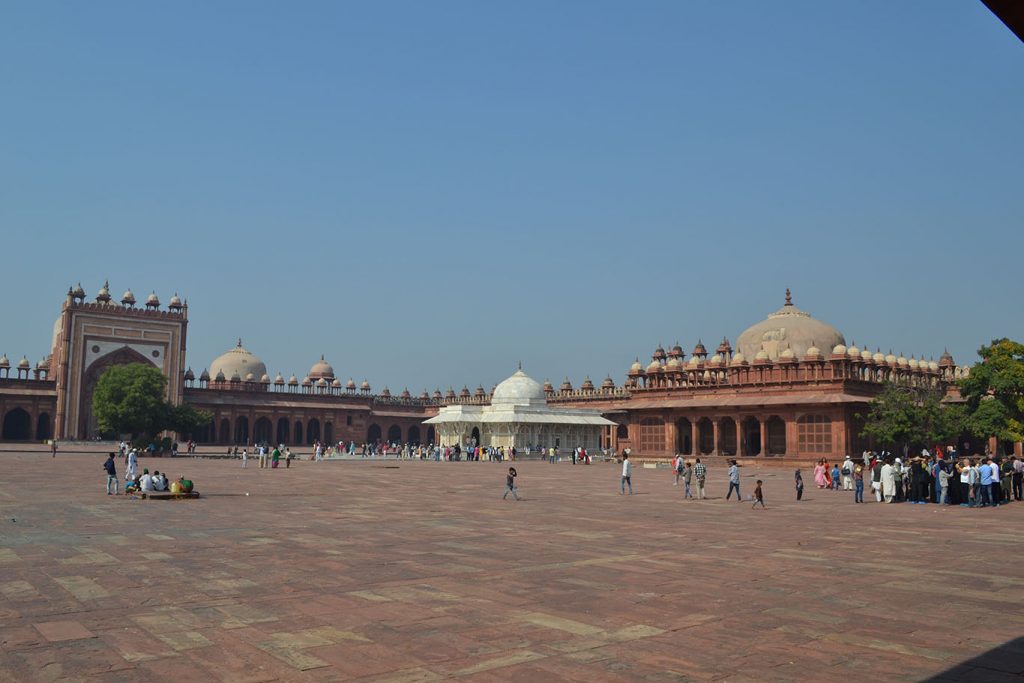
Buland Darwaja: This is another impressive gateway built after Akbar’s victory over Gujarat. Fifty metres high, it is made of red sandstone with work of white marble. It has verses from the Quran written on it.

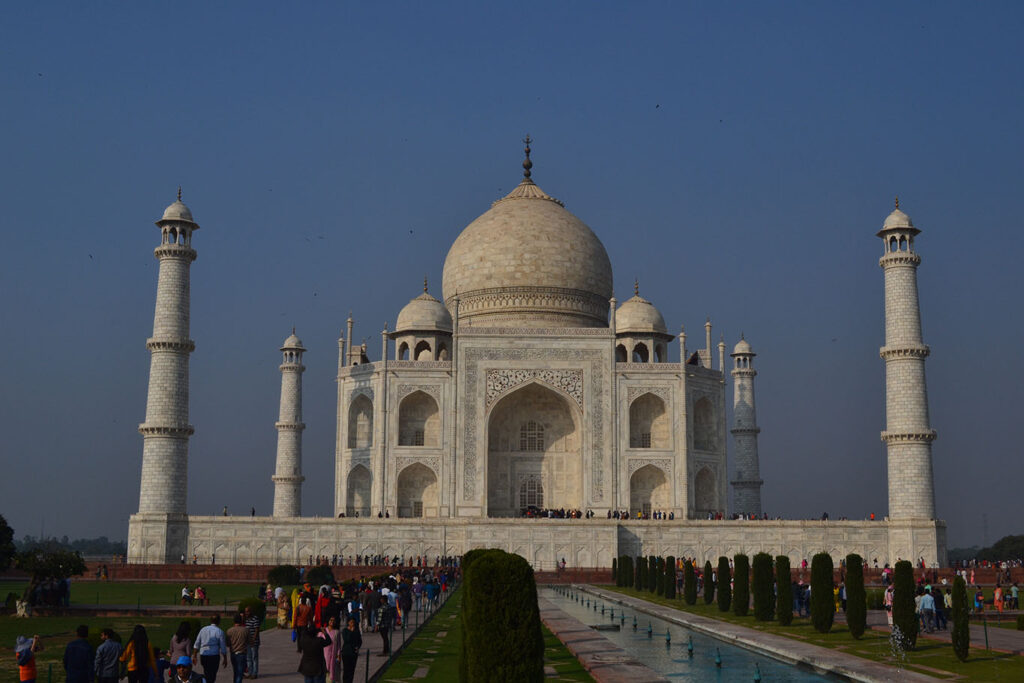
 [/column]
[/column]